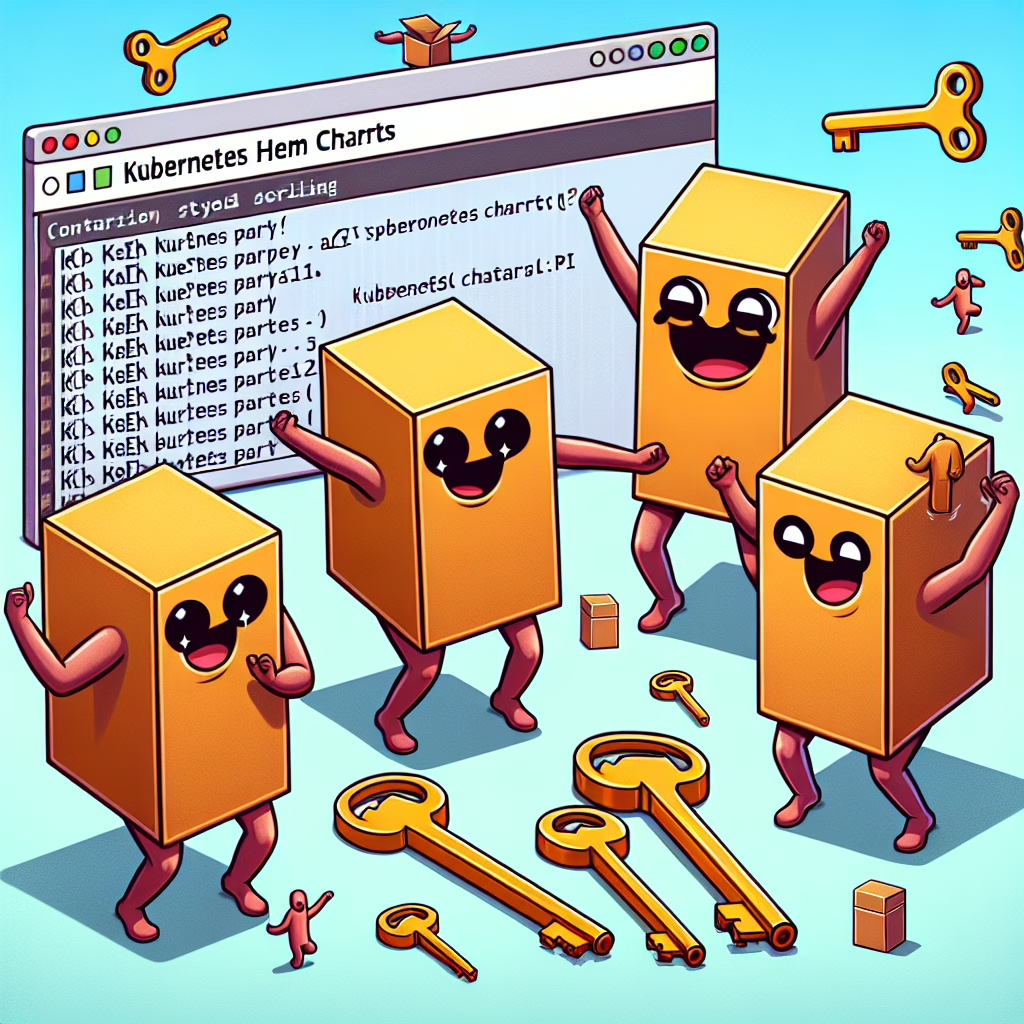In the vibrant world of Kubernetes, where containers dance like they’re at a tech gala, one might think that all is well. But hold your horses! If you’re not careful, those Kubernetes Helm charts could be the life of the party while inadvertently spilling your secrets. Yes, that’s right! These handy tools can expose sensitive data without users ever knowing. Let’s dive into this slightly chaotic yet fascinating universe and uncover how to protect your data in 2025.
Kubernetes Helm Charts: The Double-Edged Sword
First off, let’s clarify what we’re dealing with here. Kubernetes Helm charts are like the Swiss Army knives of the Kubernetes ecosystem. They package all the resources needed to deploy an application onto a Kubernetes cluster in one neat bundle. However, just like that one friend who brings a delightful dessert but forgets to mention the nuts, Helm charts can hide some nasty surprises.
These charts often come with default settings that prioritize convenience over security. This means they might inadvertently expose sensitive data such as API keys or database passwords. In other words, they could roll out the red carpet for data breaches while you’re busy admiring your new deployment. Understanding these risks is pivotal as we navigate the complexities of modern application development.
Why Should You Care?
If you’re managing applications on Kubernetes, you should care because security is no laughing matter—unless you enjoy existential dread! Recent studies have shown that unsecured configurations are a leading cause of data leaks. So, while your applications are busy doing their thing, it’s crucial to ensure they aren’t unintentionally broadcasting your secrets to the world.
But don’t fret! There’s hope on the horizon, and it comes in the form of best practices and guidelines designed to keep your data safe while still allowing you to enjoy the benefits of Kubernetes Helm charts.
Best Practices for Safeguarding Your Data
Let’s get into some actionable tips to help you shield your sensitive information from prying eyes:
- Review Default Values: Always check the default values in your Helm charts. It’s like checking for hidden ingredients in a recipe—sometimes you don’t want that extra pinch of salt!
- Implement Role-Based Access Control (RBAC): Use RBAC to limit who can access what within your cluster. It’s like giving everyone their own VIP lounge at a concert—no random gatecrashers allowed!
- Use Secrets Wisely: Kubernetes provides a mechanism for managing sensitive information called Secrets. Make sure you utilize it instead of hardcoding credentials directly into your Helm charts.
- Audit Regularly: Conduct regular audits of your configurations. Think of it as spring cleaning for your code—get rid of any dust bunnies (or vulnerabilities) lurking around!
- Stay Updated: Keep an eye on updates for both Kubernetes and Helm. Updates often include security patches that can protect you from emerging threats.
The Future of Kubernetes Security
The future looks bright for Kubernetes security, but only if we stay vigilant! As we move through 2025 and beyond, organizations must prioritize security in their development cycles. The rise of automation and AI will help streamline these processes, but we can’t afford to become complacent.
In an ideal world, developers would create Kubernetes Helm charts with security baked right in—just like a well-made pie! Until that utopia arrives, however, it’s up to us to ensure our deployments are secure and our data remains safe. Additionally, organizations should foster a culture of security-first thinking among their teams to enhance vigilance.
Final Thoughts
So there you have it! While Kubernetes Helm charts can be a fantastic asset in deploying applications quickly and efficiently, they also come with their fair share of risks. By following best practices and staying informed about potential pitfalls, we can enjoy all the benefits without losing our precious data along the way.
If you’ve had experiences with Kubernetes Helm charts, or have tips on securing them further, we’d love to hear from you! Share your thoughts below!
A huge thank you to TechRadar for shedding light on this important topic! For more details, check out the original article here.
By implementing these suggestions and remaining proactive, we can significantly mitigate risks associated with Kubernetes. Make sure to keep abreast of news and updates in the world of Kubernetes and Helm to stay one step ahead!

